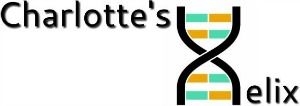| DNA - Computing with soup Computihttp://www.economist.com/node/21548488ng |
| advent |
| propagate |
| soup |
| giant |
| base pair |
| Velcro |
| bind |
| strand |
| rung |
| network |
| linked |
| route |
| test tube |
| task |
| a far cry |
| prompted |
| pattern |
| disease |
| signature |
| pioneer |
| Free-floating |
| Sticky |
| tab |
| detach |
| culminate |
| threshold |
| weight |
| match |
| loop |
| trigger |
| Tic-tac-toe |
| destroy |
| piggyback |
| classifier |
| tricked |
| hijack |
| pathway |
| model |
| debug |
| behaviour |
| workbench |
| How many bases in a gene? |
| Can the Qian circuit fit in all cells? |
| What underlies the natural circuit controlling gene activity? |
| What was the solution to the travelling salesman problem? |
| What are the advantages of DNA computing? |
| What are the disadvantages ? |
Thursday, 29 November 2012
29 Nov 12 Sogesta - Economist Computing with soup
Subscribe to:
Post Comments (Atom)

Is the translation of "in a test tube using specially sequenced DNA" : "in una provetta per analisi usando DNA con una speciale sequenza" or "in una provetta per analisi usando DNA appositamente sequenziato"? I believe that the right one is the first, but sequenced is a past participle non a noune,I don't understand, could you help me?
ReplyDeleteThanks.
Fabio D.B. (not attending student)
The noun is DNA. This DNA has been specially sequenced....
ReplyDelete